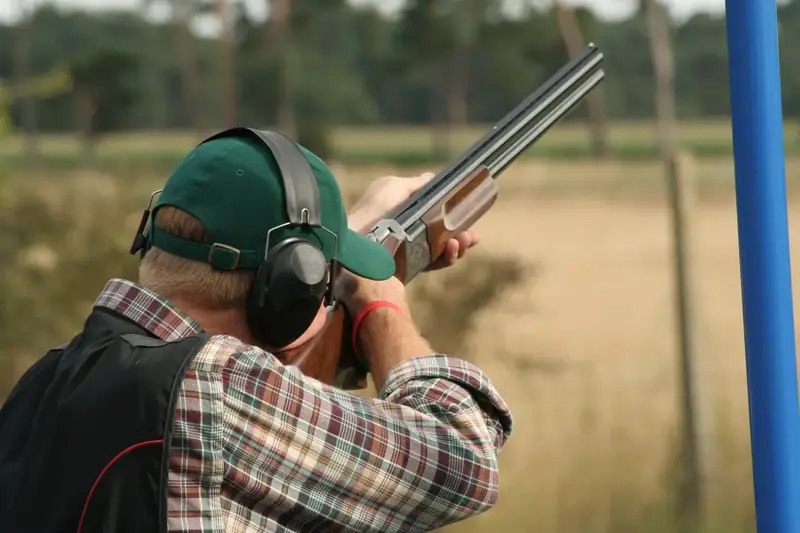The UK and Ireland Biggest Clay Pigeon Shooting, Laser Clays Network, 164 ranges



Proud Winners Of The Tripadvisor Travellers Choice Award 2025
With over 164 venues across the UK and Ireland we offer award winning services and experiences
A Beginner's Guide to Clay Shooting
Shooting Guide
A Beginners Guide to Clay Shooting
Your Instructor will:
- Determine your dominant eye
- Check you for left or right-hand shooting
- Match you with the right type/weight of gun.
It's impossible not to enjoy the thrill of blowing clay pigeons to smithereens as they soar through the air, which is why clay pigeon shooting is quickly becoming one of the most popular past times in the country, and the best way to find out why is by heading down to your nearest shooting ground.
Shooting Preparation
Your instructor will talk your through this prior to shooting, but here are a few tips:
Holding the Gun
Before taking your shot it's important for you to feel comfortable holding your gun and getting accustomed to its weight.
- Rest the stock firmly in your shoulder.
- Place your cheek against the side of the stock.
- Make sure you have a perfect line of sight down the barrel of the gun.
Shooting Stance
A good stance is critical, a correct stance will distribute the weight of the gun across your body, making a more natural shot.
- For right handers,place your left leg forward, with your right foot at a right angle to your left foot. Left handers, do the opposite.
- Position your upper body slightly forward.
- Hold the gun firmly in your hand.
Readying your Shoot
Its always useful to have a few test releases to get used to the flight of the clay and to perfect your swing.
- Find your clays origin, focus your aim here.
- Take a test release, follow the clay to its descent. This will be your firing point.
- Get accustomed to the swing of the gun between the two points.
Shooting
The fun part, you've mastered the gun, the stance and line of fire, now you need to hit that clay!
- Move slightly ahead of the clay as you follow it through the air.
- Remember to keep your gun moving when you shoot, the clay doesnt stop moving, so your gun shouldnt either.
- Stay calm, its not as hard as it looks!
Jargon
- Kill Spot - the point at which you stand a greater chance of hitting the clay.
- See a Pair - watch a pair of clay discs being launched so you can watch the trajectory.
- No Bird -a clay that didn't lauch properly so it doesn't count.
Shooting Tips
- Dress in suitable clothing for the weather on the day. If you are cold, have wet feet or overheat it will spoil your experience.
- Advise the venue if you are a female or a younger shooter. Both female and younger shooters need adapted guns to reduce recoil.
- Take full advantage of the information you receive from your instructor. They are professionals and know how to take you from missing every target to smashing the clays out of the sky in one session.
- Watch your team members technique if they are hitting more clays than you.
- Above all, enjoy the experience. Nothing quite compares to smashing a clay to smithereens as it flies overhead, and most of our venues guarantee that, even if you have never held a gun before, you will achieve that during your session.
Shooting Challenges
Clays can come at you from all different directions, depending on the type of shoot you are taking part in. The following are the most popular:
Skeet
This is a game of relatively close-range crossing targets, presented from a high tower on the left of the range and a low tower on the right. Shooters take it in turns to shoot from eight different positions (or pegs) set in a semi-circle. There is a set sequence of targets which include doubles - simultaneous birds in the air from both towers, crossing the air in front of the shooter.
Sporting
The objective here is to simulate the hugh variety of different animal targets encountered in field shooting. A typical competition may be shot over as many as ten or more stands, each offering a different type of target - going away, incoming, crossing, rising or falling. Sometimes the targets are launcged in pairs, or 'pairs on report'. This when a second target is released the moment you take your first shot.
Trap
Whilst there are variations of target presentations and slightly different rules, all trap based shooting have one thing in common - all the targets are going away from the firing position, originating from a trap house about 16 yards in from of the shooter. Common trap disciplines are Down the Line (DTL), Ball Trap and Double Trap.

Join Us Get the Latest Deals & Offers!